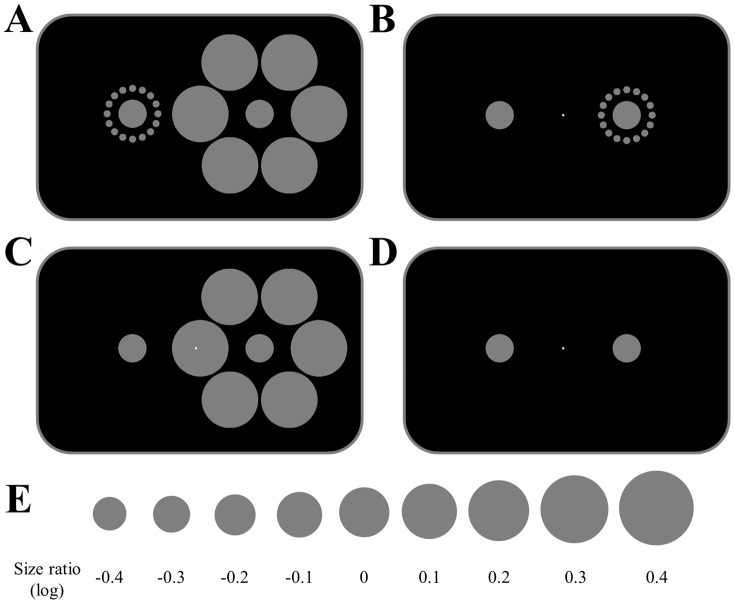Figure 1. The Ebbinghaus illusion.
A. In the classical form of the illusion two identical circles are surrounded by smaller (left) or larger (right) inducers. This causes a perceived difference in the size of the two central circles. B–D. Example stimuli (all without any physical size difference between test and reference) for the three stimulus conditions. Participants fixated the small white dot while two circles were shown to the left or right of fixation. One circle (the left in all these examples) was the reference and always remained constant. The other circle was the test stimulus and could either be surrounded by small inducers (B), large inducers (C), or no inducers (D). The hemifield where the test stimulus appeared was pseudo-randomized and counterbalanced for each participant. E. The size of the test stimulus varied between 9 different test/reference size ratios on a logarithmic scale (shown here schematically).

